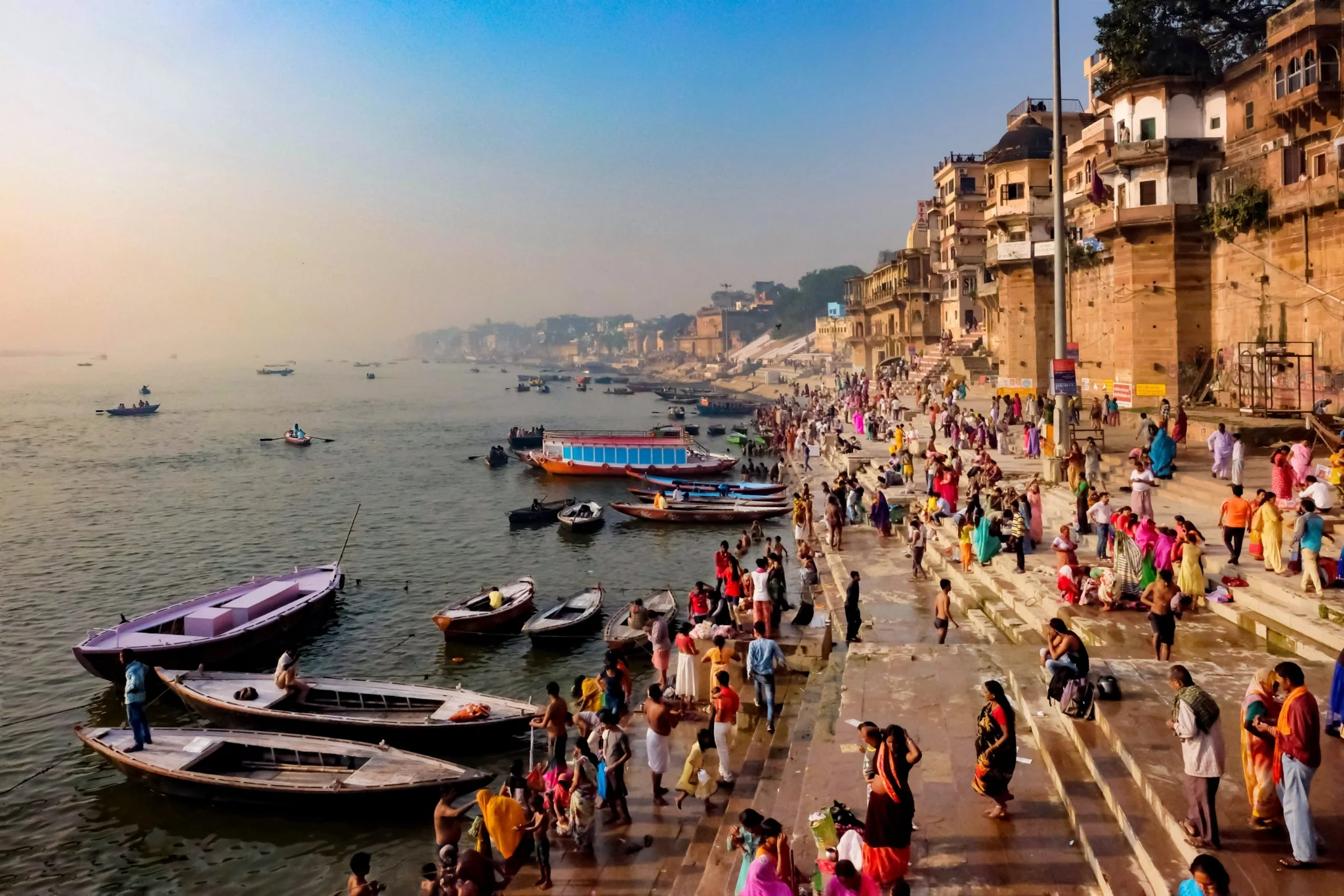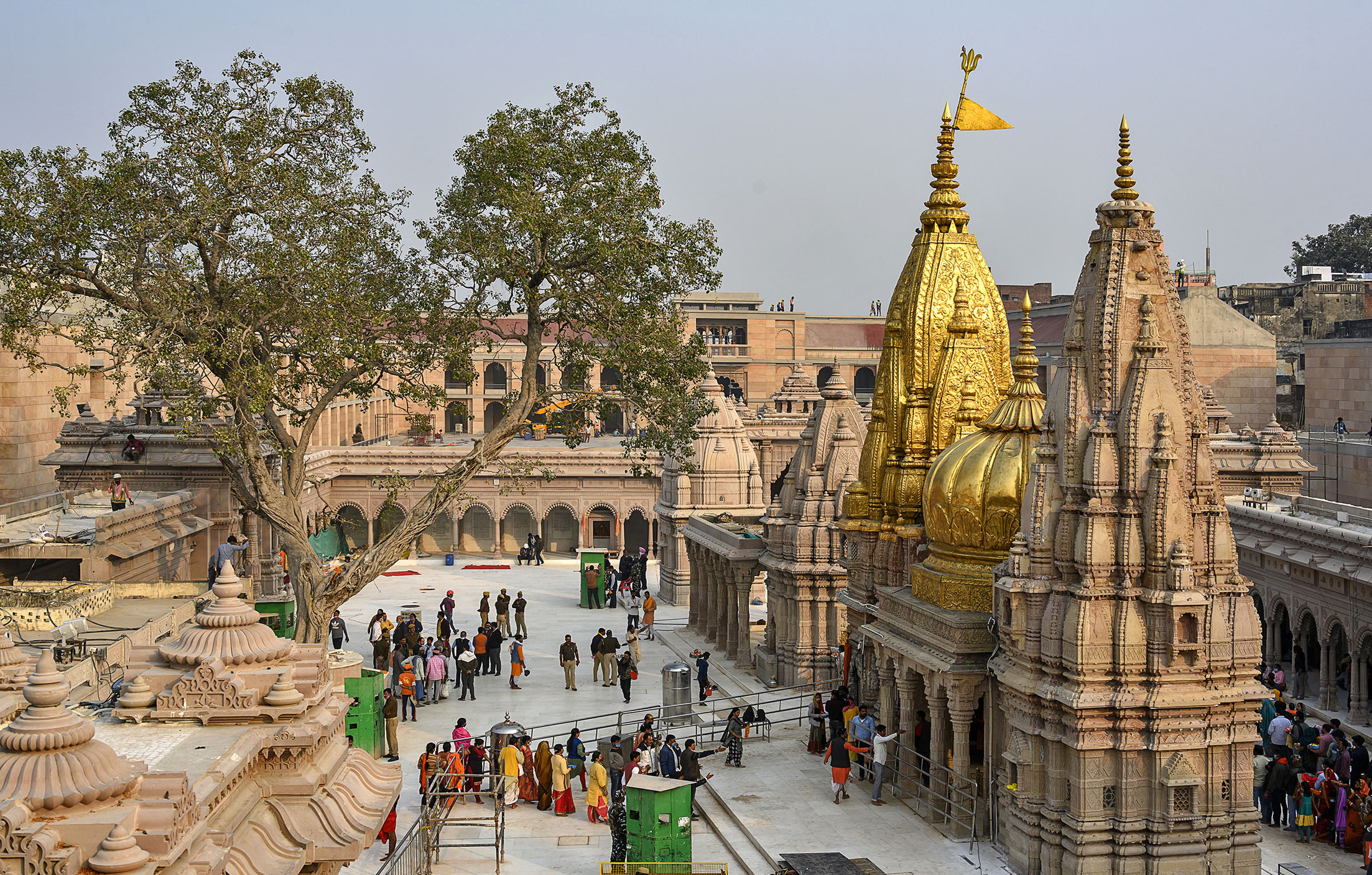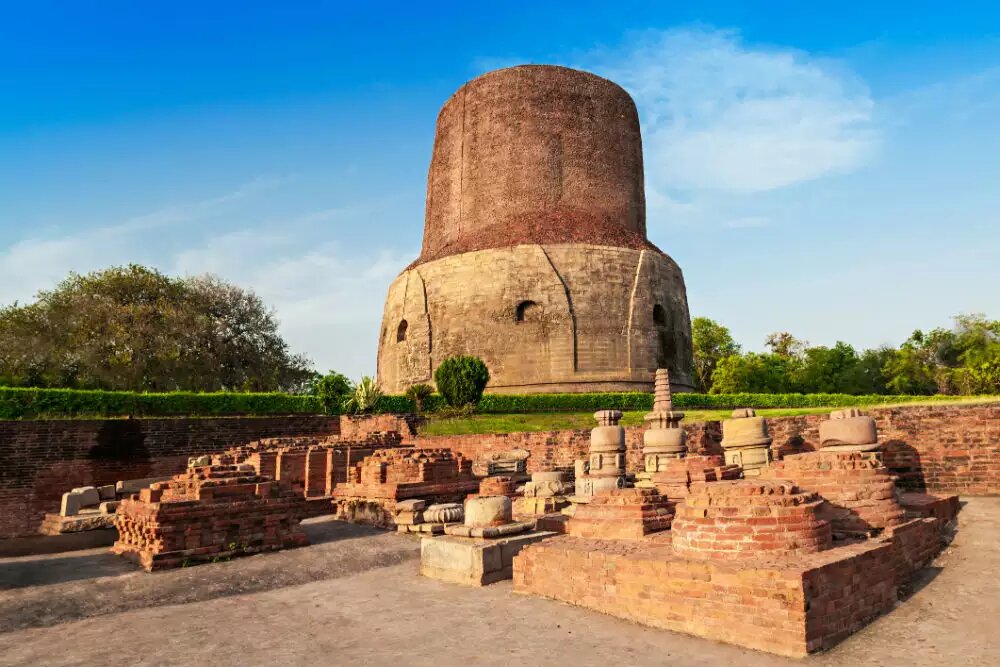Varanasi, also known as Kashi or Banaras, is a city unlike any other. Nestled on the banks of the sacred River Ganges in the state of Uttar Pradesh, Varanasi is one of the oldest continuously inhabited cities in the world. Steeped in spirituality, mythology, and history, it’s a place where time seems to stand still, and every corner whispers tales of ancient wisdom and tradition. From its labyrinthine alleys to its bustling ghats, Varanasi is a sensory overload, a kaleidoscope of colors, sounds, and scents that will leave an indelible mark on your soul. Here are some of the best places to visit in Varanasi, along with answers to some frequently asked questions to help you navigate this mystical city.
- The Ghats of Varanasi

The ghats of Varanasi are perhaps its most iconic feature, offering a glimpse into the timeless rituals and traditions that have been practiced here for centuries. A ghat is a series of steps leading down to the river, and Varanasi boasts over 80 of them along the banks of the Ganges. Each ghat has its own unique character and significance, from the bustling Dashashwamedh Ghat, where the famous Ganga Aarti ceremony takes place every evening, to the serene Assi Ghat, known for its tranquil atmosphere and yoga practices. Taking a boat ride along the river at sunrise or sunset is the perfect way to experience the magic of Varanasi’s ghats.
- Kashi Vishwanath Temple

Dedicated to Lord Shiva, the Kashi Vishwanath Temple is one of the holiest Hindu temples in India and a major pilgrimage site for devotees. Located in the heart of Varanasi’s old city, the temple is believed to be one of the twelve Jyotirlingas, or manifestations of Lord Shiva. Its towering spire and golden dome dominate the skyline, drawing visitors from all over the world who come to seek the blessings of Lord Vishwanath. Be sure to observe the intricate architecture and the spiritual fervor that permeates the temple precincts.
- Sarnath

Just a short drive from Varanasi lies the ancient site of Sarnath, where Lord Buddha is said to have delivered his first sermon after attaining enlightenment. Today, Sarnath is home to several Buddhist monasteries, stupas, and archaeological ruins, including the famous Dhamek Stupa and the Mulagandha Kuti Vihar. Walking through the tranquil gardens and meditating under the Bodhi tree, you can’t help but feel a sense of peace and serenity wash over you. Sarnath offers a welcome respite from the hustle and bustle of Varanasi, allowing visitors to connect with the teachings of the Buddha in a profound way.
- Banaras Hindu University (BHU)

Founded in 1916, Banaras Hindu University is not only one of the largest residential universities in Asia but also a cultural and intellectual hub in Varanasi. Spread over a sprawling campus, BHU is home to several colleges, research institutes, and museums, including the Bharat Kala Bhavan, which houses a vast collection of art and artifacts from across India. Visitors can explore the university grounds, attend lectures and cultural events, or simply relax in the lush greenery of its gardens. BHU’s bustling student life and vibrant atmosphere make it a must-visit destination for anyone interested in the rich tapestry of Indian academia and culture.
- Ramnagar Fort

Situated on the eastern banks of the Ganges, the Ramnagar Fort is a testament to Varanasi’s royal legacy. Built in the 18th century by the Maharaja of Banaras, the fort is a fine example of Mughal architecture, with its imposing sandstone walls, marble balconies, and intricately carved gateways. Inside the fort, you’ll find a museum showcasing a treasure trove of vintage cars, royal artifacts, and weaponry, offering a fascinating glimpse into the opulent lifestyle of the erstwhile rulers of Varanasi. Don’t miss the chance to witness the daily evening Aarti ceremony at the nearby Ramnagar Ghat, a spectacle that transports you back in time to the golden age of the Banaras kingdom.
Frequently Asked Questions ?:
- Is it safe to visit Varanasi?
Varanasi is generally safe for tourists, but like any other city, it’s essential to exercise caution, especially in crowded areas and during festivals. Be wary of scams and touts, and avoid walking alone at night in unfamiliar areas. Respect local customs and traditions, and dress modestly, especially when visiting temples and religious sites.
- What is the best time to visit Varanasi?
The best time to visit Varanasi is during the winter months, from November to February, when the weather is pleasant and comfortable for sightseeing. Avoid visiting during the summer months (April to June) as temperatures can soar, making outdoor activities unbearable.
- How do I get around Varanasi?
Varanasi is a compact city, and most of its attractions are within walking distance of each other. Auto-rickshaws and cycle-rickshaws are readily available for short journeys, while taxis and private cabs can be hired for longer trips. Alternatively, you can explore the city on foot or by taking a boat ride along the Ganges.
- What should I wear when visiting Varanasi?
Varanasi is a conservative city with a strong religious ethos, so it’s advisable to dress modestly, especially when visiting temples and religious sites. Avoid wearing revealing or provocative clothing, and opt for lightweight, breathable fabrics to cope with the heat and humidity.
- Are there any food restrictions in Varanasi?
Varanasi is famous for its street food, especially its mouthwatering chaats, sweets, and snacks. However, it’s essential to be cautious about where you eat to avoid stomach upsets. Stick to busy eateries with high turnover, avoid raw or undercooked food, and drink only bottled water or packaged beverages to stay hydrated.
